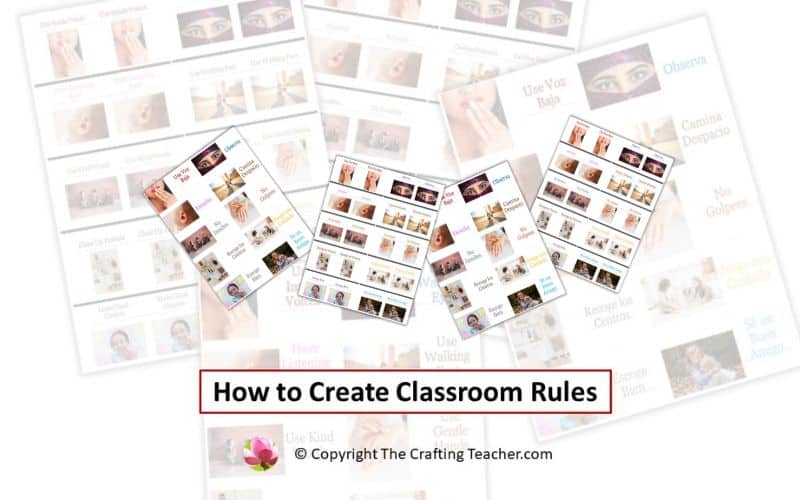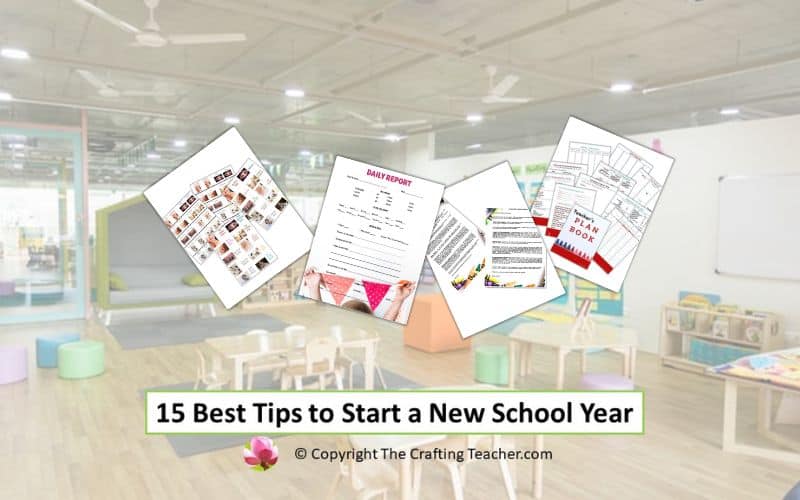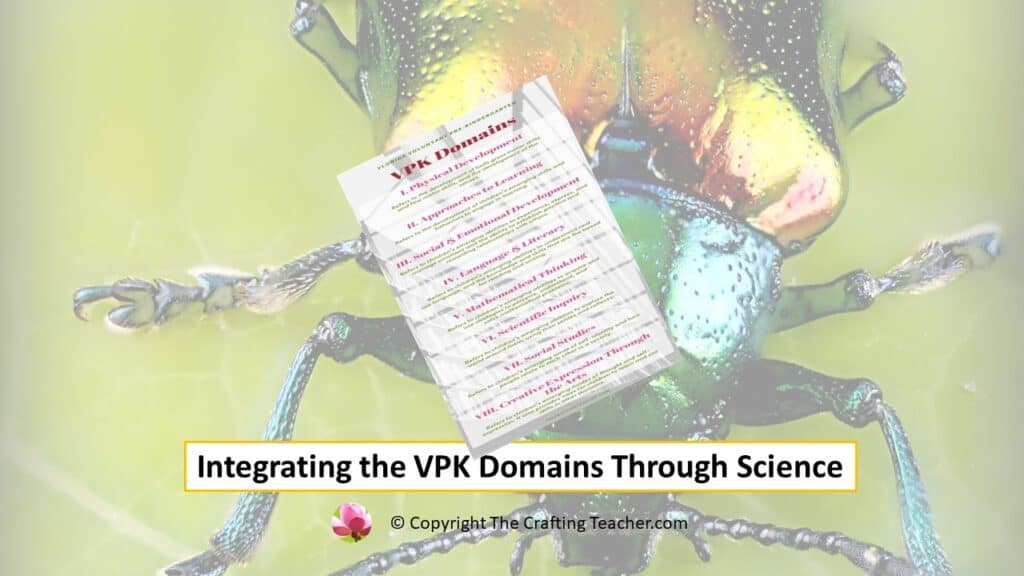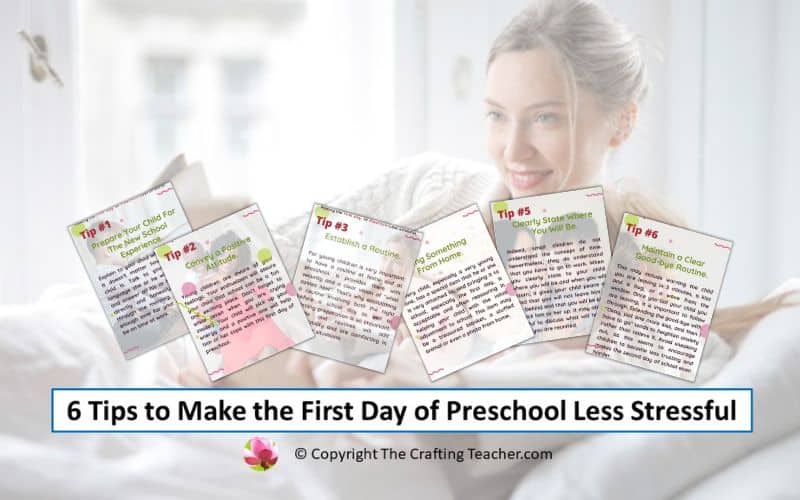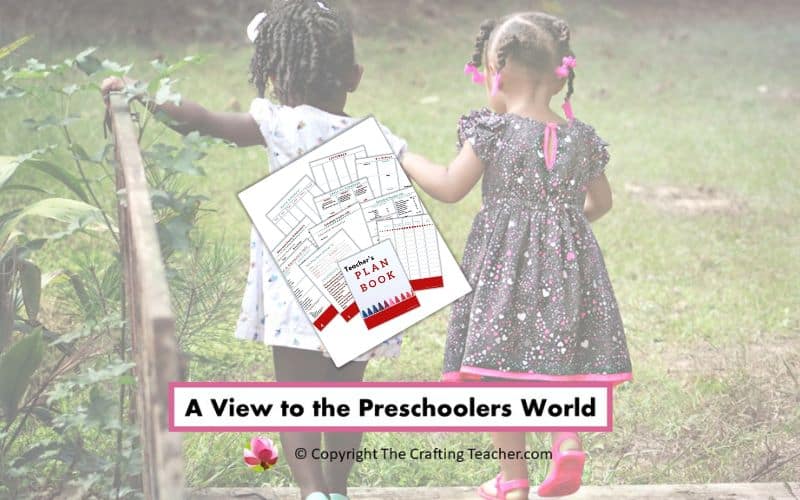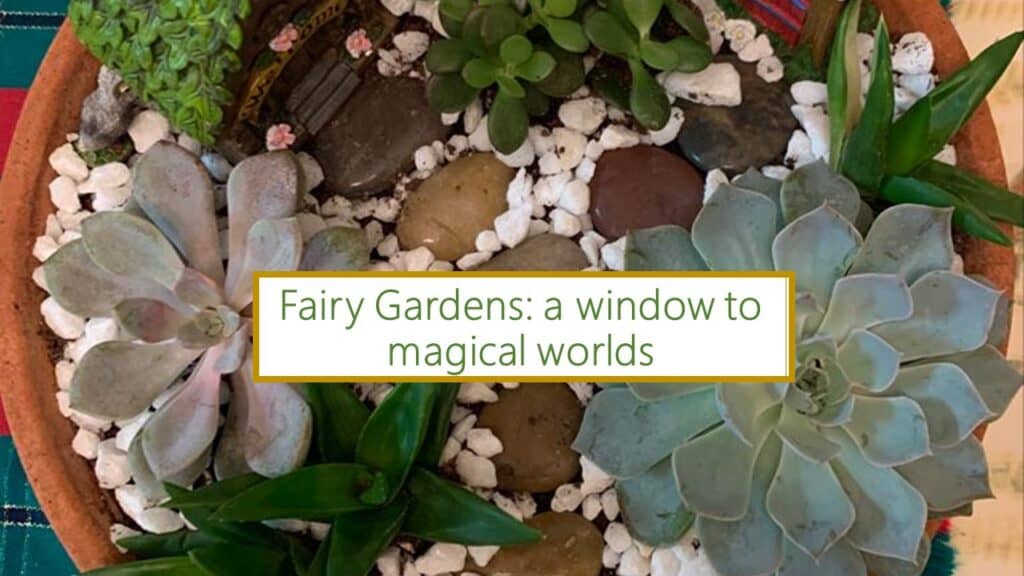How to Create Classroom Rules for Preschool
and use them as a managing tool for your classroom
The new school year starts, and a new batch of preschoolers of many different characters comes with it. Some are quiet and attentive, some are observant and excited, some are impulsive and little daredevils, and that’s okay. Still, when you think that safety is a priority, you must establish rules that will set the tone in your classroom from the beginning.
Preschoolers need to know what is expected of them consistently. This will improve their social skills and emotional development and decrease behavioral problems. Because of this, it is important to discuss and try to create the classroom’s rules on the very first day and review them every day after.
The classroom rules should be simple and created with your students. This practice will allow them to develop a sense of belonging and importance and take ownership of these rules, which will promote a better learning environment.
Creating classroom rules should not be difficult or complicated. Here are some suggestions that might help.
Steps to Create Classroom Rules
The first thing you need to do is think about the rules you would like to address and your students to follow to guide your preschoolers when it’s time to set them up.
Create a List with Your Preschoolers
To be more effective, it is recommended that you involve your class in the creation of the rules. For example, you can use circle time to talk to your preschoolers about the classroom rules and involve them in writing them. This way, you will start building the foundation for your school family, promoting a strong sense of classroom community for your children and supporting positive social behaviors.
Keep It Simple
Rules must be simple. It is not recommended to use more than four or five rules. That way, you can be sure that your preschoolers will understand and learn them, but make sure to explain how their behaviors might affect themselves, their friends, and their classroom.
Use plenty of examples, such as:
- “If you step on the toys, you can break them or trip and hurt yourself.”
- “If you push your friend down the slide, she might get hurt.”
- “How will you feel if somebody hurt you? Well if you hurt your friend, he will feel like that”.
You get the picture. Preschoolers understand more than you think if you talk to them clearly and with plenty of examples.
Use Positive Language
Choose your words carefully to make your rules sound positive and easy to understand. Using long phrases or complex language will confuse your preschoolers, and they will see those rules as negative.
What I mean by that is that instead of saying things like “Don’t run”, you can say “Walking Feet”, or “Don’t hit” you can say “Gentle Hands”. You are saying the same thing, but the positive approach sounds wholly different and, well….. positive.
Include Print and Pictures
Remember that preschoolers do not read yet. It is important to use print (words) and pictures (visuals) together to help your preschoolers associate the rules with the corresponding actions, just like you do with your labels.
Some Ideas for Rules
Remember that preschoolers do not read yet. It is important to use print (words) and pictures (visuals) together to help your preschoolers associate the rules with the corresponding actions, just like you do with your labels.
Here are some samples of standard rules that you can use in your classroom:
- Use Inside Voices
- Have Watching Eyes
- Use Walking Feet
- Have Listening Ears
- Use Gentle Hands
- Use Kind words
- Clean Up Centers
- Play Safely
- Be a Good Friend
- Make Good Choices
You and your students must decide what rules work for your classroom, but if you need some help in the meantime, here are some free posters I created for this purpose.
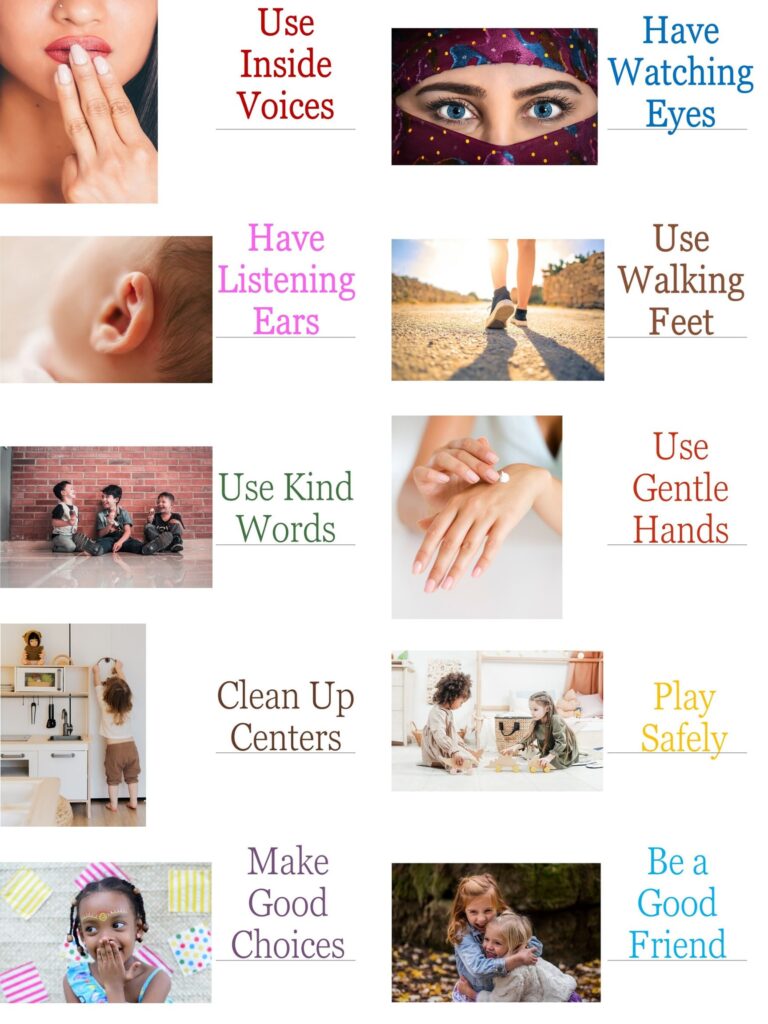
How to Explain and Introduce the Rules
Once you and your preschoolers write down the rules you will use, decide how you will address them and what visuals you would like to use. Again, children are more likely to follow the rules if you let them be part of the process because they will take ownership and responsibility – they will also help you remind their friends, making your job easier. Don’t forget to be consistent, and soon, you will have a classroom community where everybody will help everybody because they are all actively involved in creating rules.
Explain Each Rule
Remember that children will not learn the rules right away. You will have to be consistent in reviewing and reminding them of the rules every morning and every time you see somebody breaking one. It is an excellent practice to review each rule individually and why it is needed using examples. Once you do these several days in a row, then you can start using circle time to ask them questions such as: “Why do we use walking feet?” “Why do we use gentle hands? This will help your children better understand the specific behaviors associated with each rule.
Post Your Classroom Rules
To complete the process, make a poster with the rules you will use (don’t forget the visuals) and post it on your classroom walls. Having a constant reminder will help the children (and you) remember them, reinforcing your daily reviews.
How to Enforce Classroom Rules
Okay. This is the tricky part. I don’t think there is a classroom in the world that will work like magic in a short period. I haven’t seen anyone in more than 40 years of education, and if you know about one, please let me know! Preschoolers will test their boundaries (and your patience) constantly. The only thing you can do, again, is to be consistent. This is an ongoing battle, but I promise that you will harvest the fruits down the road. Some of your children will turn into reminders, others into enforcers (at least they will try), and overall, they will learn the rules, even the ones that will break them regardless.
Nevertheless, these are some suggestions that might help you:
- Have children wash their hands when they enter the classroom in the morning, before and after eating or using the sensory table, and after being in the playground (safety rule).
- Please do not allow your children to change centers before they clean up. Remind them they are responsible for cleaning up after they finish or when they spill something, such as the contents of the sensory table (clean-up rule). It will help them tremendously if you place small toys in tubs or bins and label them with a word and image of what they’re supposed to go there.
- Do not throw their plates, cups, and napkins in the trash can. Have them do it themselves (clean-up rule).
- Do not allow them to run in the classroom. If they do, remind them that they must have “walking feet” if they are inside the building (safety rule).
- Teach them to use “inside voices” when talking inside the classroom and raise their hands if they want to say or ask something during circle or storytime. This rule has kept me sane for as long as I’ve taught.
- Teach them not to touch another child’s work without asking if they can play as well (good friend rule).
- Teach them to take care of books and other objects in the classroom, and if they don’t know how to use something, to ask you (playing safe rule).
Reinforcement Positive Behaviors Only
Negative attention produces a negative response. Always be positive in anything you do, and also sweet and gentle but firm when you have to remind one of your children about your classroom’s rules. Never make your children feel embarrassed or belittled redirect them on the right path. It is very important to carve some time to give every child one-on-one attention to gain your child’s trust and respect. Once you do that, it will be much easier to prevent undesirable behaviors.
Read Stories
I love books. I think there should be some kind of law that enforces reading to children. It is one of the most important things teachers and parents can do for their children. Reading not only gives your children the basis for reading and writing but also helps them understand a lot of things that otherwise will be more difficult since they present scenarios in print and pictures that help the children imagine and internalize what is being read to them.
Okay, you know what I’m trying to say… read stories that present characters that break rules, and ask your children open-ended questions about their own experiences and what they think will happen next in the story, then read what the story says. That will provide your preschoolers with vivid examples of what to do or not.
Here are some of my favorite books to tackle the subject of rules:
- The Grouchy Ladybug by Erick Carle teaches children the essential concepts of time, size, shape and the benefits of friendship and good manners.
- Best Behavior by Patricia Hegarty and Sakshi Mangal. This book follows an adorable cast of characters throughout the day as they learn to be kind, considerate, and caring in this cheerful and colorful rhyming book.
- All About Feelings by Felicity Brooks. is a fun, friendly, and reassuring introduction to feelings designed to help young children recognize, understand, and name how they’re feeling and learn to talk about and manage their emotions in helpful ways.
- How to Be a Friend by Laurie Krasny Brown and Mark Brown. With playful full-color illustrations, this book helps children to cope with everyday social situations and learn how to be a good friend and how to handle difficult situations.
Model the Rules
A good way to illustrate what you are trying to teach is by modeling the expected behavior, how to make good choices, and role-playing different scenarios. For example, you can tell your students: “I use a quiet voice inside because I do not want to hurt anybody’s ears” or “I use walking feet because if I run, I may trip and hurt myself or hurt a friend.”
I know is very time-consuming but I promise you, in the end, you will be able to collect the rewards of your hard work. Remember your kiddos need to be taught. They won’t learn just by hearing you talk. If you want your preschoolers to clean up on cue, you have to teach them how and where things go. If you want them to share, you have to take the time and teach them how to do it.
You should never expect your preschoolers to follow the rules just because they are simple. Everything that you want them to learn has to be taught, modeled, and role-played, to have success in the long run.
The Importance of Classroom Rules
Rules are fundamental to managing your classroom and trying to establish order in the classroom, and they are a necessary and very important tool if you want to have an effective teaching and learning process, but also help you prevent problems from occurring.
You can simply inform your preschoolers what the rules are but, by letting them decide with you which are the rules you are empowering them, making those rules theirs, and with this, your preschoolers will have a greater commitment to keeping them. Classroom rules in preschool will help your preschoolers make better choices, display appropriate behavior, and create a positive climate of mutual respect where they will feel safe and ready to learn.
Things You Should NOT Do in Your Preschool Classroom
Classroom rules should be effective at work, and the better way to accomplish this is by teaching children how to be responsible for their actions, how to make good choices, and helping them follow through.
Remember that it is very important to create a climate in your classroom that promotes mutual respect, safety, and being noticed, where everybody feels like a family, cares for each other, and displays empathy. To accomplish this, there are certain things that, in my opinion, you should never do, since will disrupt the desirable atmosphere you want to create and promote the opposite behaviors.
The things you should never do or use are:
Time Out
When you use time out you are reinforcing bad behaviors, it doesn’t teach anything and only makes children feel isolated, sadder, or angrier.
A better idea is to have a special corner or calming area in your classroom where children can go voluntarily when they feel the need to take a moment by themselves to handle, regulate, and regain control of their emotions, and use the tools provided there to problem-solve and select better choices.
Some items you may want to include in this area are:
- Soft stuffed animals.
- Books about making better choices and having the best behaviors.
- A small spray bottle with lavender water that they can squirt and smell (lavender has a very calming effect).
- Soft texture and/or emoji pillows that children can hug or squeeze.
- A tube of lavender or chamomile lotion that they can rub on themselves.
Behavior Charts
Behavior charts are inflexible and time-consuming because require lots of prep time and complicated rules, aside from being punitive. These types of charts don’t accomplish or teach anything. They only make children feel pointed out, accused, and ashamed, which will have the opposite response to the one you are trying to accomplish.
The best way to go is to give your preschoolers the necessary tools to make better choices, have them feel accountable for their actions, establish a personal connection or relationship with your kiddos, and help them solve problems.
Remember that by giving them choices you are not only empowering them but you are teaching them valuable life lessons that will be able to internalize and use. When you acknowledge your children’s good behaviors you are reinforcing these desirable actions and will create a positive and extremely powerful classroom environment.
Treasure Box
Treasure boxes work very similarly to behavior charts and they are also very expensive. You should never reward good behaviors because those are exactly the behaviors they should be having when they are following the classroom rules.
Again, it is more effective to teach your preschoolers how to make their own choices to have the great reward in the good feelings they will have when choosing to do what is right and you take the time to acknowledge and praise those choices.
Last Thoughts
When you establish a good relationship with your preschoolers and create a positive, safe, and nurturing climate in your classroom, your kiddos will follow the rules and will try their best to do the right thing.
Never forget to give praise and point out when students are following the rules, to teach them which are acceptable behaviors, encourage those behaviors, and develop those positive relationships I mentioned with your students, but always remember to be very specific and clear.
Next thing you know, your students not only will internalize these rules and correct themselves, but also help you remind their friends of those rules. I promise you it will be extremely rewarding to have your kiddos being kind, helping each other, and interacting positively.
Be healthy, safe, and creative. I wish you well.
Love,

P.S. I would love for you to tell me if you like this classroom poster or if you think I should modify it. Also, if you need something more specific for your classroom, please let me know. I would love to help in any way I can.

